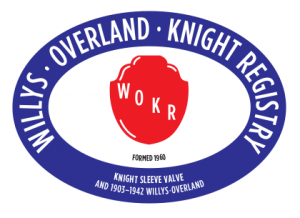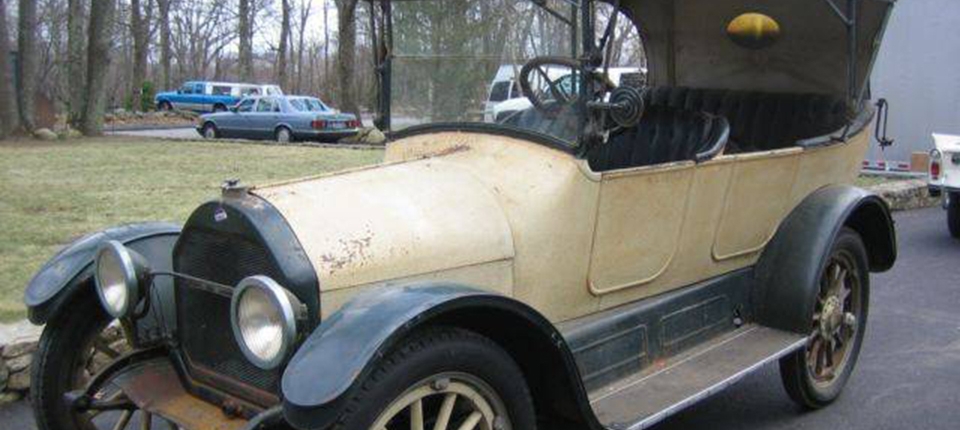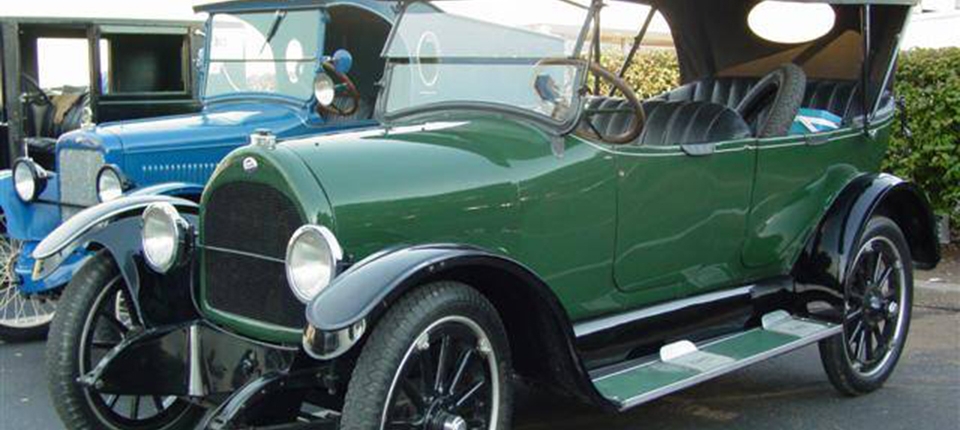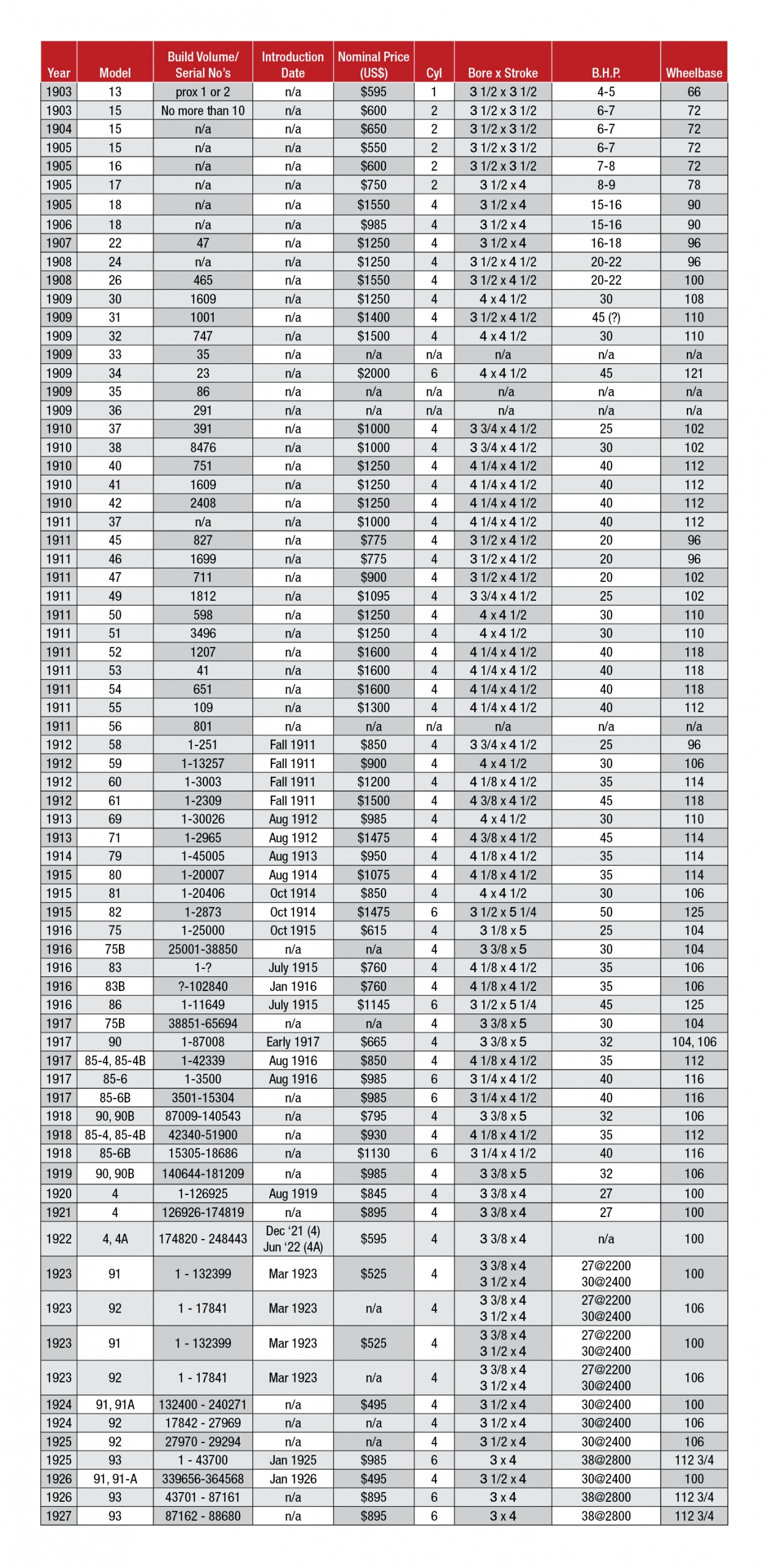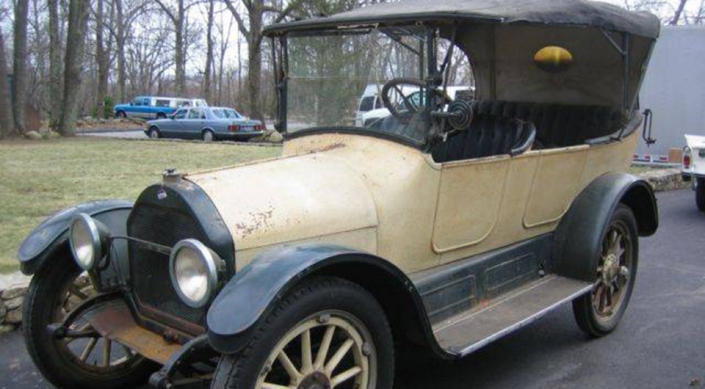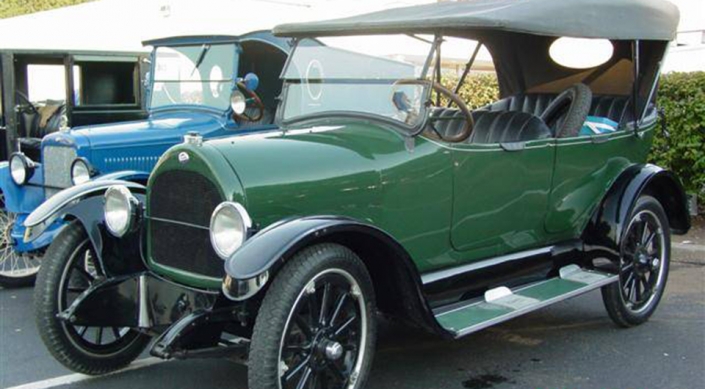Overland History
The Early Days
It was Claude E. Cox who had designed and built the first Overlands – the first test drive being on 12th Feb 1903. He was initially financed by the Standard Wheel Company and operated from 671 Ohio St., Terre Haute, Indiana. Standard Wheel lost interest after a boiler explosion at the plant in 1904 and Cox was able to buy the fledgling company for $8,000. More money was required and Cox was able to obtain financial backing from David M. Parry who had made his fortune in manufacturing 2 wheel horse drawn carts. The Overland Automobile Co. was incorporated on 31st March 1906 with Parry having a 51% share and Cox 49%. Unfortunately a short but severe economic depression in 1907 saw Parry’s empire badly hit, even to the extent of him losing his house. It had been at this point that J.N. Willys arrived on the scene having ordered 500 Overlands, sent a deposit of $10,000 and wondering where his cars were. He found no complete cars, just partially assembled ones, and a company that didn’t have the money to pay the weeks wages. In a desperate and legendary 11th hour attempt to save not only his order, but the company, he was able to raise enough credit based on his financial friends in Elmira to keep the company going over that crucial Thanksgiving weekend when closure seemed so imminent and then into the following weeks.
He reorganized the company, upgraded production facilities and built a new factory in the summer of 1908 but soon realized demand was exceeding capacity, even though production of the then current Model 24 had totaled 465 vehicles, 10 times that of 1907.
Expansion was the order of the day and early in 1909 he acquired the Marion Motor Car Co. of Ohio. In September he acquired the huge and modern Pope plant in Toledo, Ohio for $285,000. This proved to be a bargain because J.N. Willys was able to sell off a lot of surplus material and recoup a lot of his money. On October 26th 1909, Willys Overland as it was now called, was reorganized with the Toledo plant as the empire capital. The Overland Model 38 was the first to be built in Toledo. Sliding gear transmissions replaced epicyclic, an interesting fact when you consider 1909 was the year Ford introduced the ever popular Model T, which of course used the epicyclic transmission right through to 1927. 1909 was also the year that Claude Cox left to follow a career in photography, obtaining patents on new instruments and processes with his inventive and creative mind.
By 1911, the Indianapolis facility was only used for component assembly work. Willys Overland vehicle figures were 18,745 compared with Ford at 34,979.
By 1912 Overland had become America’s second largest producer of cars at 26,000 units and exceeded only by Ford. Garford and more importantly it’s plant at Elyria had been added to the W-O empire. The position of second place behind Ford lasted right up until 1918.
As early as 1909 there had been vehicles badged with the Willys name as well as Overland. These vehicles were more expensive than anything badged simply as “Overland” and by 1917 the consumer was offered the choice of Overland, Willys or Willys Knight depending on their budget and choice of engine – sleeve valve or poppet valve. Even though J.N. Willys openly preferred the Willys Knight, he could see that the cheaper poppet valved Overlands were his “bread and butter”. There were many Overland models on offer, but the cheaper ones sold in higher volumes and this was even more evident during the 1914-1918 war years. Sales margins were tight during the war years, but a serious strike directly afterwards threatened to cripple the Willys Overland empire. Whilst the Willys Knight vehicles proved the company’s excellence at precision engineering it was the Overland line of vehicles that would put the company back on its feet.
Overlands After the War
During the period 1920 – 1926, Willys Overland produced a succession of 4 cylinder models which were designated 4, 4A, 91 and 91A – all on 100 inch wheelbases. In 1923 another 4 cylinder model was introduced, this time designated Model 92, but on a 106 inch wheelbase and more readily remembered as the Bird series. Red Birds had red bodies, Black Birds had black bodies and Blue Birds of course had blue bodies. Sometimes all these models are known simply as the Overland Four. The goal had been to sell the car for $500 to compete with the Ford Model T. However the war induced increases in prices for steel and labour and so the selling price for 1920 ended up at $845 and upwards.
Total combined production of the 4 cylinder models 4, 4A, 91, 91A and 92 over the August 1919 to May 1926 period amounted to some 642,000 vehicles. All used the Triplex 3 point cantilever spring system consisting of 2 quarter elliptic springs mounted at angles at both the front and rear of the car.
The 6 cylinder Model 93 however, used conventional semi elliptic springing.
Overlands after 1925
In June 1926 the 4 cylinder Overland Whippet was announced. Although badging said “Overland” till Jan 1927, manuals and brochures all referred to the new type car as an “Overland Whippet”, never just “Overland”.
The new Whippet was such a success that the name was soon used for a six cylinder version with model designation of 93A. See Whippet 4 and Whippet 6 galleries for examples and information.
In 1939 the Overland name made a brief comeback. This car featured hydraulic brakes, 102 inch wheelbase and 61 bhp @ 3600 rpm and yet was more expensive than the Willys – a break with logic since consumers had long been accustomed to the Willys name, rather than Overland, being used on the more expensive vehicles. See Willys Gallery for examples and information.
Overland Serial Numbers and Specifications
The following information extracted from the W.O.K.R. Roster (with permission) can help with identification.
Overland History Chart from 1903-27
Click the button below to see a full-size Overland History Chart; this PDF file will open in a new tab where you can print the image.
